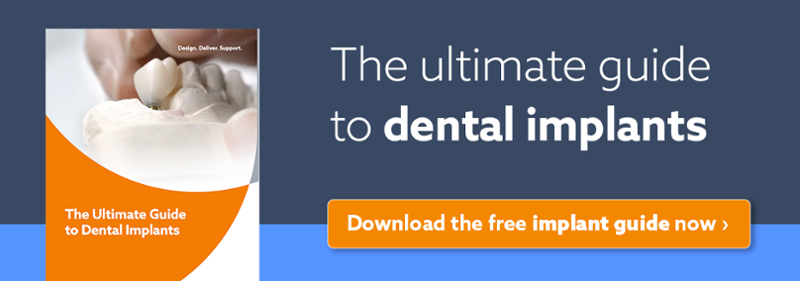Titanium dental implants have been used for decades; it’s widely regarded as the ideal choice for many reasons. Although titanium dental implants have proven to give good long-term clinical outcomes in terms of functional success and rigid fixation, complications due to soft tissue recession are widespread. Using zirconia abutments can potentially minimise soft tissue recession and will hide the metal colour of the titanium, but over the past few years, several new zirconia dental implant systems have been introduced onto the market. Initial clinical studies into zirconia implants look promising, but more research is needed, particularly in the long term effects of these systems. Clinicians may also require a better understanding of the potential technical challenges of using this material to reduce the possibility of mechanical failure of zirconia implants.
Zirconia implants can be ideal for people who have thinner gingival tissues, and they may be a good solution for people who wish to have a metal-free dental implant. Also, it is extremely rare for people to have allergies to titanium dental implants. However, some people may be sensitive to other metals present in the alloy and could have concerns about having any type of metal in their body. The natural white colour of zirconia is aesthetically appealing, and zirconia implants can help preserve the bone and promote better gingival health. Gum tissue around ceramic materials tends to be healthier, largely because zirconia is inert and doesn’t corrode. One study assessing Straumann ceramic implants in animals found a reduced pocket depth and higher soft tissue attachment compared to an ordinary titanium implant.
The first zirconia dental implants were a one-piece design which, although hygienic and good for soft tissue health, meant they could not heal underneath the gums. The one-piece design could create problems if chair-side adjustments were required. While zirconia is a very strong material when subjected to compressive forces, its elasticity is quite low. If adjustment is needed, this could lead to the formation of micro-cracks that may ultimately cause the failure of the dental implant. Where a small diameter implant is used, low elasticity might cause problems as the possibility of the implant fracturing may increase. Top implant manufacturers have designed and produced implants to mitigate these risks using high-performance zirconia (Y-TZP). Two-piece zirconia dental implants are now available, making it easier for these dental implants to be left undisturbed while osseointegration is completed. This also allows abutments to be customised, all without compromising the strength of the implant.
Titanium dental implants have been extensively studied over long periods of time, affirming the high survival rates and high success rates of these implants in many different applications. One possible disadvantage of choosing titanium implants is poorer aesthetics, particularly when used to restore anterior teeth. The greyish colour of the dental implant can become exposed through the peri-implant mucosa where soft tissue recession occurs or if the patient naturally has thinner gingival tissue.
Conclusion:
Titanium and zirconium are the only two elements that do not prevent implants from integrating into the bone. Zirconia dental implants appear to have a similar success rates to titanium implants. Currently, a far greater number of clinicians will choose titanium dental implants rather than zirconia dental implants because they know these implant systems have been extensively studied over decades, creating added reassurance. This knowledge allows them to confidently recommend titanium implants to patients. However, for many patients, aesthetics is a particular concern and sometimes zirconia may be a preferable choice, and especially for people with metal sensitivities.
Please be reminded that our experienced technical team is here to assist you should you wish to discuss a case in more detail.
Click here to schedule a consultation with our technical team »

References:
https://symbiosisonlinepublishing.com/dentistry-oraldisorders-therapy/dentistry-oraldisorders-therapy66.php
http://www.jdionline.org/article.asp?issn=0974-6781;year=2015;volume=5;issue=1;spage=39;epage=42;aulast=Patil
http://www.straumann.co.uk/en/dental-professionals/straumann-products-and-solutions/implant-solutions/ceramic-implants.html
https://www.oralhealthgroup.com/features/biomechanical-and-clinical-attributes-of-zirconia-dental-implants-two-case-reports/